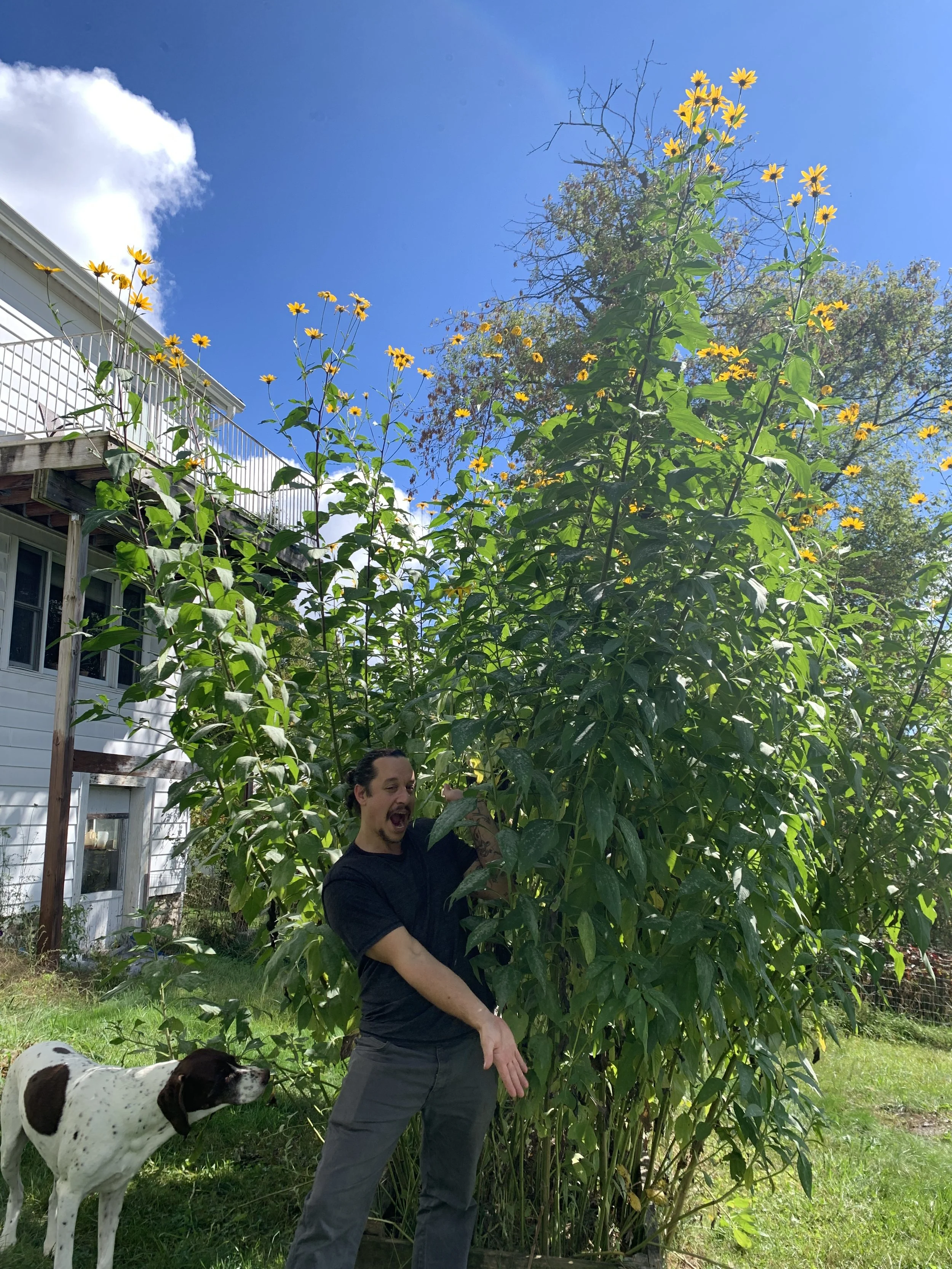How To Grow & Cook Sunchokes
Sunchokes (also known as Jerusalem Artichokes, or fartichokes) are a true fall garden treasure. They’re a nutty tuber rich in iron, potassium, and inulin- a pre-biotic fiber that a incredible way to give your gut health a boost coming into fall and winter.
The pre-biotic fiber is where they get their Fartichoke nickname- if you're not used to a high fiber diet we recommend eating them cooked rather than raw. If you’re a serious bean and veggie eater- they’re great raw, thin sliced, in a salad.
Sunchokes make an incredible roasted breakfast dish: on chilly mornings we like to toss them in the oven with some garlic, salt, pepper, and olive oil till they're tender on the inside and crispy and caramelized on the outside (cook at 375 for about 30-ish minutes).
To plant sunchokes, space them about 18 inches apart and plant them 4-6inches deep in either a raised bed or a bed you’ll be able to mow around to keep them contained. We choose not to plant them in our main garden as they can get a bit invasive- mowing them down when they pop up where they’re unwanted addresses this beautifully. We always plant them right after we’ve harvested them in the fall- and like to cover them with some fresh compost and hay, straw, or leaves as a mulch. Water them in well. They’ll pop up in late-ish spring next year and will be ready for harvest after sustained chilly nights or a first freeze in the fall. Our often grow 9 - 12 feet tall.
Chickens and rabbits absolutely LOVE the leaves and we shred or chop the stems before composting them.
Here are some great videos on how to cook and plant Sunchokes
Sunchoke Puree
Lacto-Fermented Sunchoke Pickles
Raw Italian Sunchoke Salad
Oven Roasted Sunchokes
Mashed, Roasted and Crisped Sunchokes
5 Tips to Grow a Ton of Jerusalem Artichoke/Sunchoke

